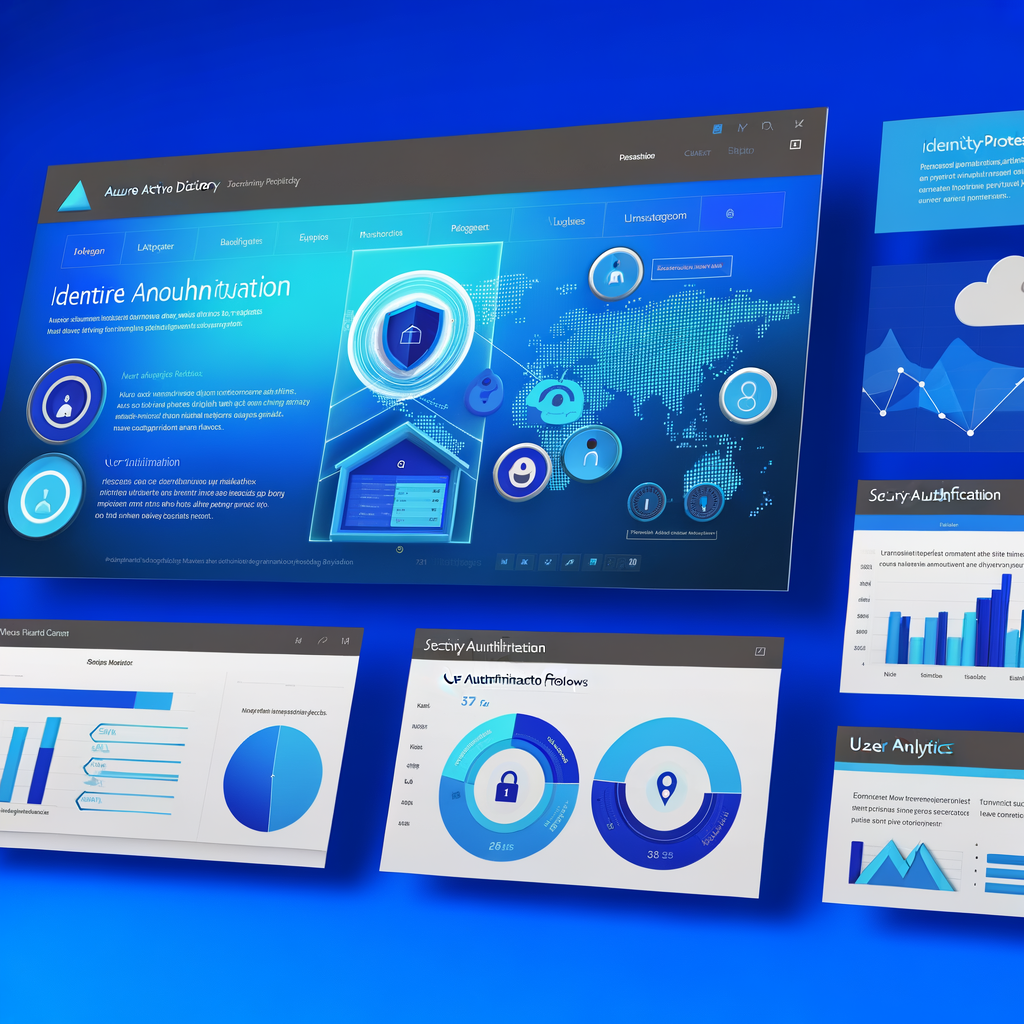Welcome to Part 4 of our Zero-Trust Architecture series. Building on the Conditional Access foundation from Part 3, we now explore sophisticated risk management capabilities that transform static security policies into intelligent, adaptive protection systems using Azure AD Identity Protection’s machine learning and global threat intelligence.
Understanding Risk-Based Authentication
Traditional authentication systems make binary decisions: allow or deny access based on credentials. Risk-based authentication introduces nuance, considering context, behavior patterns, and threat intelligence to make informed decisions about each access attempt.

Azure AD Identity Protection Overview
Identity Protection analyzes over 30 billion sign-in attempts daily across Microsoft’s ecosystem to identify patterns and anomalies, providing real-time risk assessment for every authentication attempt.
Risk Detection Categories:
├── Real-time Detections
│ ├── Anonymous IP usage
│ ├── Atypical travel patterns
│ ├── Malware-linked IP addresses
│ ├── Password spray attacks
│ └── Threat intelligence indicators
├── Offline Detections
│ ├── Leaked credentials detection
│ ├── Impossible travel analysis
│ ├── Malicious IP intelligence
│ └── Admin-confirmed compromise
└── Risk Scoring
├── Sign-in risk (0-100)
├── User risk (0-100)
└── Adaptive thresholdsRisk Levels and Response Strategy
| Risk Level | Score Range | Typical Indicators | Recommended Response |
|---|---|---|---|
| Low | 0-30 | Familiar location, trusted device | Standard authentication |
| Medium | 31-70 | New location, unmanaged device | Require MFA, session monitoring |
| High | 71-100 | Anonymous IP, leaked credentials | Block access, force password reset |
Implementing Risk-Based Policies
Create dynamic policies that respond to calculated risk levels:
{
"displayName": "Dynamic Risk-Based Access Control",
"state": "enabled",
"conditions": {
"users": {
"includeUsers": ["All"],
"excludeGroups": ["EmergencyAccess"]
},
"applications": {
"includeApplications": ["All"]
},
"signInRiskLevels": ["medium", "high"],
"userRiskLevels": ["medium", "high"]
},
"grantControls": {
"operator": "OR",
"builtInControls": ["mfa", "passwordChange"]
},
"sessionControls": {
"signInFrequency": {
"isEnabled": true,
"type": "hours",
"value": 4
}
}
}Advanced Detection Scenarios
Impossible Travel Detection
Identity Protection calculates whether it’s physically possible for a user to travel between geographic locations:
Impossible Travel Analysis:
├── Geographic Distance Calculation
│ ├── Previous: New York (203.0.113.1)
│ ├── Current: Tokyo (198.51.100.1)
│ └── Distance: ~6,700 miles
├── Time Analysis
│ ├── Previous: 14:00 UTC
│ ├── Current: 15:30 UTC
│ └── Difference: 1.5 hours
└── Risk Assessment
├── Min travel time: ~14 hours
├── Available time: 1.5 hours
└── Result: HIGH RISKLeaked Credentials Monitoring
Microsoft continuously monitors dark web marketplaces and breach databases to identify compromised credentials:
// PowerShell: Monitor leaked credentials
$leakedCreds = Get-AzureADIdentityProtectionRiskDetection |
Where-Object {$_.RiskType -eq "leakedCredentials"}
foreach ($detection in $leakedCreds) {
Write-Host "User: $($detection.UserPrincipalName)"
Write-Host "Risk Level: $($detection.RiskLevel)"
Write-Host "Detection Time: $($detection.DetectedDateTime)"
Write-Host "---"
}
Automated Response Mechanisms
Configure automatic responses to high-confidence risk detections:
Automated Response Workflow:
├── Risk Detection Triggered
│ ├── Calculate confidence score
│ ├── Determine threat severity
│ └── Initiate response protocol
├── Immediate Actions
│ ├── Block suspicious access
│ ├── Require step-up authentication
│ ├── Notify security team
│ └── Log incident details
├── User Communication
│ ├── Send security alert
│ ├── Provide self-service options
│ └── Guide remediation steps
└── Continuous Monitoring
├── Track user behavior
├── Adjust risk scores
└── Update threat intelligenceMachine Learning and Behavioral Analytics
Identity Protection builds behavioral baselines for each user to detect anomalies across multiple dimensions:
- Temporal Patterns: Work hours, time zones, access frequency
- Geographic Patterns: Common locations, travel patterns
- Device Patterns: Preferred devices, browsers, OS
- Application Usage: Frequently accessed apps, usage patterns
Integration with Security Operations
Connect Identity Protection with Azure Sentinel for comprehensive security monitoring:
// KQL Query: Correlate identity risks with security events
IdentityProtectionEvents
| where TimeGenerated > ago(24h)
| where RiskLevel == "High"
| join kind=inner (
SigninLogs
| where RiskLevelDuringSignIn == "High"
) on UserPrincipalName
| project TimeGenerated, UserPrincipalName,
RiskEventType, IPAddress, Location
| summarize RiskEvents = count() by UserPrincipalNamePerformance Monitoring and Optimization
| Metric | Target | Measurement Method | Optimization Action |
|---|---|---|---|
| False Positive Rate | <5% | User feedback analysis | Tune detection sensitivity |
| Detection Coverage | >95% | Simulated attack testing | Add custom detections |
| Response Time | <5 minutes | Alert-to-action latency | Automate workflows |
| User Impact | <2% friction increase | Help desk ticket analysis | Adjust thresholds |
Common Challenges and Solutions
Challenge 1: High False Positive Rates
Solution: Implement gradual risk threshold adjustments and extensive user education. Use report-only mode to baseline normal behavior patterns.
Challenge 2: VPN and Proxy Interference
Solution: Configure trusted IP ranges for corporate VPN exit points and implement device compliance requirements for remote access.
What’s Next
In Part 5 of our series, we’ll explore device management and compliance integration with Microsoft Intune. You’ll learn how to extend Zero-Trust principles to endpoint security and create comprehensive device compliance policies.
Continue to Part 5: “Device Management & Compliance” where we’ll integrate endpoint security into your Zero-Trust architecture, ensuring device trust becomes fundamental to access decisions.





